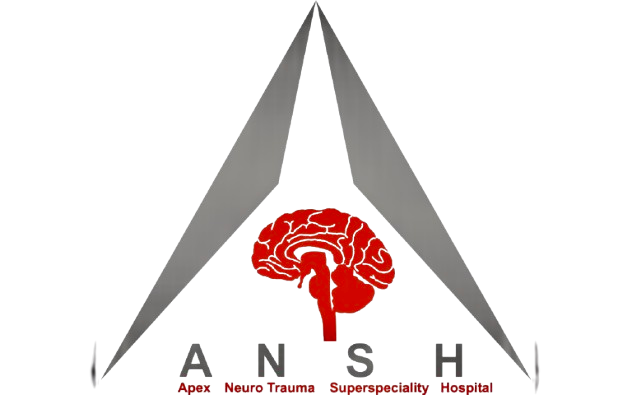Stroke is a major health concern worldwide and is particularly prevalent in India. Every year, millions suffer from strokes, often leading to serious health issues or even death. Recognizing the initial signs of a stroke can save lives. Acting quickly can prevent lasting damage and improve recovery chances. Understanding what to look for and responding swiftly is crucial.
Anyone can have a stroke, making early recognition and action critical. Knowledge is key. By knowing what stroke symptoms to look out for, you can be prepared to help a loved one or even yourself. The more awareness on stroke increases, the more lives we can save. Early action and immediate response enhance outcomes and provide a lifeline to those affected.
Understanding Strokes: Types and Context
Strokes occur when blood flow to the brain is interrupted. Stroke prevention becomes achievable with a clear understanding of its types. There are three main types of strokes:
- Ischemic Stroke: This happens when a blood clot blocks or narrows an artery leading to the brain. It is the most common type of stroke, making up about 87% of cases.
- Hemorrhagic Stroke: This type occurs when a blood vessel bursts in the brain, causing bleeding. It’s less common but more severe than ischemic strokes.
- Transient Ischemic Attack (TIA): Often called a “mini-stroke,” a TIA is a temporary blockage that usually doesn’t result in permanent damage but is a warning a stroke may happen soon.
Understanding these types is vital in recognizing and responding to stroke symptoms quickly.
Many believe strokes only affect older adults. However, younger individuals can experience strokes too. Increasing awareness on stroke in younger populations is critical. Encouraging people across age groups to learn about the signs and take preventive measures can significantly reduce risk.
Learning how awareness on stroke can protect those at risk empowers communities. By spreading knowledge of different types of strokes, we can break down misconceptions about age-specific vulnerability and promote healthier lifestyles.
Recognizing Stroke Symptoms and Acting Fast
Recognizing a stroke is vital. Some common stroke symptoms include:
- Sudden confusion
- Numbness or weakness in the face, arm, or leg, especially on one side
- Vision problems
- Severe dizziness or trouble walking
- Intense headache without a known cause
Immediate action is necessary once any of these signs appear. The “Golden Hour” is a critical time for seeking medical help. The sooner treatment is started, the better a person’s chances are of recovery.
The FAST acronym can help everyone remember the key stroke symptoms and act fast:
- Face Drooping: Ask the person to smile. Does one side of the face droop?
- Arm Weakness: Ask the individual to raise both arms. Does one arm drift downward?
- Speech Difficulty: Ask the person to repeat a simple sentence. Are their words slurred?
- Time to call emergency services: If you see any of these signs, call for help immediately.
Stories and statistics highlight how fast action can alter outcomes dramatically. For instance, John, a 45-year-old, suffered a stroke. His wife noticed his slurred speech and called for help immediately. Thanks to her swift action, John received the necessary treatment within the “Golden Hour.” Today, he leads a healthy life, all due to immediate recognition and response.
Quick action ensures better recovery, as seen in many cases. Encouraging people to act fast can significantly influence the prognosis of a stroke sufferer. Keep stroke prevention in mind with immediate medical assistance, creating a positive difference in recovery.
Prevention and Awareness of Strokes
Understanding and addressing risk factors are crucial for stroke prevention:
- Hypertension: High blood pressure is a major cause of strokes.
- Lifestyle Factors: Unhealthy diet, lack of exercise, and smoking increase risk.
- Regular Health Check-ups: Monitoring and managing health conditions reduce risk.
Steps for stroke prevention involve simple lifestyle changes. Adopting a healthier diet, maintaining regular exercise, and avoiding smoking significantly lower stroke risks. Regular health screenings provide early warnings and allow for timely interventions.
Community support and resources available for stroke patients bolster prevention efforts. Celebrating stroke awareness month provides opportunities for community engagement in preventive education.
As advocates, you can play a key role in spreading awareness on stroke. Share information, support local events, and encourage regular health check-ups. Encourage those around you to learn and educate themselves on stroke symptoms and act fast stroke strategies.
By heightening risk factor awareness and encouraging preventive action, we can all contribute to healthier communities and improved stroke outcomes. Engaging communities in prevention efforts creates a supportive environment that prioritizes health education and proactive care.
In conclusion, understanding awareness on stroke and the importance of recognizing early signs is critical. Fast action can save lives, emphasizing stroke prevention and fostering healthier communities through knowledge and immediate response.
References
1. https://www.howardmemorial.com/community-resources/blog/may-is-national-stroke-awareness-month
3. https://www.chcsks.org/blog/post/stroke-awareness-be-fast-to-save-lives
4. https://ukhsa.blog.gov.uk/2015/10/29/why-acting-fast-when-it-comes-to-a-stroke-is-so-important/
5. https://bmcgeriatr.biomedcentral.com/articles/10.1186/1471-2318-9-35
6. https://www.cdc.gov/pcd/issues/2019/18_0564.htm
7. https://www.ahajournals.org/doi/10.1161/strokeaha.107.493908
8. https://www.cdc.gov/pcd/issues/2019/18_0564.htm
Keywords
#Stroke, #strokesymptoms, #Strokeprevention, #Awareness, #action, #Fast, #Recognize, #health, #Understanding, #Signs

